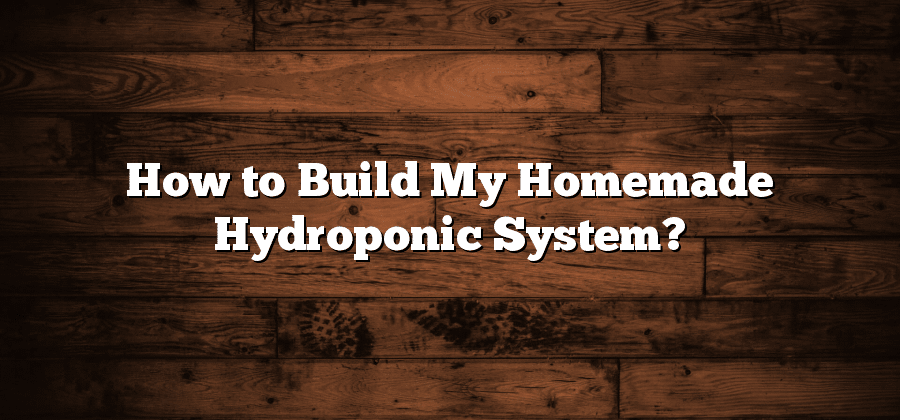Understanding the Basics of Hydroponics
Hydroponics is a modern method of gardening that eliminates the need for traditional soil-based cultivation. Instead, plants are grown in nutrient-rich water solutions, allowing them to receive the necessary nutrients directly. This method offers numerous advantages, such as increased plant growth rate, higher yields, and reduced water usage. Moreover, hydroponics can be practiced in various settings, from small-scale indoor gardens to large commercial operations.
One of the key principles of hydroponics is the precise control over the plant’s environment. By carefully monitoring factors such as light, temperature, and nutrient levels, growers can optimize growth conditions and achieve maximum results. Additionally, hydroponics allows for year-round cultivation, independent of seasonal constraints. This enables farmers to have a continuous and reliable supply of fresh produce, free from the fluctuations of traditional farming methods. In understanding the basics of hydroponics, it is essential to grasp how these factors collectively contribute to the success of this innovative gardening practice.
Selecting the Right Plants for Your Hydroponic System
When it comes to selecting plants for your hydroponic system, there are a few key factors to consider. First and foremost, it’s important to choose plants that are well-suited for hydroponic growing. While most plants can be grown hydroponically, some are better equipped to thrive in this controlled environment. Leafy greens such as lettuce, spinach, and kale are popular options for hydroponic gardening due to their ability to grow quickly and produce high yields. Herbs like basil, mint, and oregano also do well in hydroponic systems, as they typically have shallow roots and can tolerate the nutrient-rich water.
In addition to considering the type of plants, you should also think about space and light requirements. As hydroponic systems can be set up indoors or outdoors, you’ll need to ensure that your chosen plants have enough room to grow and receive adequate light. Some plants, like tomatoes or peppers, require a lot of vertical space for their vines to climb or support. Others, like microgreens or herbs, can be grown in smaller containers or even on a windowsill. Remember to research the specific needs of each plant variety and plan accordingly to optimize their growth and development in your hydroponic system.
Gathering the Essential Materials for Your Homemade Hydroponic System
To get started with your homemade hydroponic system, you will need to gather the essential materials. These items will serve as the foundation for your system and help ensure the success of your hydroponic endeavor.
First and foremost, you will need a suitable container or reservoir to hold the nutrient solution. It is crucial to choose a container that is sturdy, leak-proof, and of adequate size to accommodate the number of plants you plan to grow. Many hydroponic enthusiasts prefer using food-grade plastic containers or large buckets that can be easily obtained from gardening stores or online suppliers. Additionally, consider investing in a lid or cover for your container to prevent evaporation and contamination of the nutrient solution.
Next, you will need a growing medium to support the plants and allow their roots to access the nutrient solution. There are various options available, including perlite, vermiculite, coconut coir, and rockwool. Each medium has its own pros and cons, so it is essential to research and choose one that best suits your plants and system setup. Additionally, you will need to have enough of the chosen growing medium to fill the containers or pots that will house your plants. Remember to thoroughly rinse and prepare the medium before using it to ensure optimal plant growth.
Designing and Building the Framework for Your Hydroponic System
When it comes to designing and building the framework for your hydroponic system, there are a few key considerations to keep in mind. First and foremost, you want to ensure that your system is sturdy and secure. This is important because, unlike traditional soil-based gardening, hydroponic systems require a stable framework to support the weight of the plants and the water. When constructing your framework, be sure to choose durable materials that can withstand the constant moisture and weight of the system. Additionally, it is important to consider the size and layout of your space. Take measurements and plan ahead to optimize the use of your available space and ensure that your framework fits snugly in the designated area.
After you have designed the framework for your hydroponic system, it’s time to move on to the building phase. Start by assembling the necessary materials and tools. Common materials for building the framework include PVC pipes, metal or wooden beams, and sturdy connectors. When choosing these materials, consider the weight and size of your plants, as well as the size of your desired system. Once you have gathered all the necessary materials, follow a step-by-step guide or a set of detailed instructions to ensure that you build your framework correctly and securely. Remember, a well-built framework is the foundation for a successful hydroponic system, so take the time to build it properly.
Creating the Nutrient Solution for Optimal Plant Growth
To promote optimal plant growth in a hydroponic system, creating a nutrient solution that supplies all the necessary elements is crucial. As plants no longer have access to soil for nutrient uptake, it is our responsibility to provide them with the appropriate balance of macronutrients and micronutrients they need to thrive.
When formulating a nutrient solution, it is important to understand the specific requirements of the plants you are cultivating. Different plants have varying nutritional needs, and supplying them with the correct balance of nutrients is essential for their overall health and productivity. Therefore, thorough research and understanding of the nutritional requirements of your chosen plant species is imperative to design a suitable nutrient solution.






